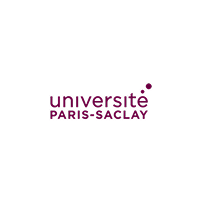Master in practice-based design research
Design at Paris-Saclay University is approached from a multidimensional perspective that integrates skills in the humanities, technology, and heritage management. Students are trained to think about design not only in aesthetic or functional terms, but also in terms of its social, cultural, and historical impact. This includes training in the history of objects in their societal context, conservation and design techniques, and how design can contribute to the preservation and transmission of cultural heritage and help address contemporary societal challenges, particularly through the use of proven and speculative methods.
Information
Skills
● Design research project skills: development of practice-based research projects;
● Mobilise craftsmanship and specialised skills, including the use of new technologies and the transmission of design knowledge;
● Formulate sound hypotheses and develop critical thinking skills, drawing on methodological, historical, sociological, philosophical and critical practical approaches;
● Produce high-quality work, both in terms of documentation and design, with particular attention to the communication and presentation of results,
● Demonstrate writing skills, in particular through logical progression of arguments, relevance of references and examples cited, explanation of methods used, and clear presentation of results, with an impactful introduction and conclusion;
● Master information literacy, ensuring the quality of the bibliography, sources, captions, and careful use of tables or figures when necessary.
Objectives
The objective of the Master 1 ‘Research in Design’ programme is to encourage students to question contemporary lifestyles through design projects and research.
In the first year, students are trained ‘by and for research’ through practical learning of the main design tools and concepts, workshops, internships, etc.
This Master's programme enables students to acquire the essential skills to become a design researcher: collecting information, designing, experimenting, coding, representing and publishing.
- in workshops, studios, work placements, etc.
- and around the essential skills of a future designer-researcher: documenting, modelling, experimenting, coding, representing and publishing. The aim of the second year of the Master’s in Research in Design is to continue the training of the designer-researcher, giving priority to learning how to use the tools of research and to research through practice and the development of a single issue.
Career Opportunities
Career prospects
Après Master + Doctorat : chercheur ou enseignant-chercheur
Après un Master ou Master + Doctorat : chercheur ou enseignant-chercheur
Après un Master ou Master + Doctorat : ingénieur (R&D, contrôle, production…)
Après un Master ou Master + Doctorat : ingénieur (recherche et développement, contrôle, production…)
Further Study Opportunities
Doctorat
Chercheur/chercheuse en R&D ou expert·e en modélisation et analyse de données dans des entreprises ou laboratoires de pointe.
Doctorat / PhD interdisciplinaire en Science de la durabilité (nombreuses disciplines possibles)
Fees and scholarships
The amounts may vary depending on the programme and your personal circumstances.
Admission Route
Capacity
Available Places
Target Audience and Entry Requirements
The entry profiles for this programme are:
- Students trained at the French Ministry of National Education's school of applied arts or the Ministry of Culture's art and design school at L3 (undergraduate) level at least
- or students in undergraduate-level design courses or other creation/design fields.
Application Period(s)
From 23/03/2026 to 24/04/2026
Supporting documents
Compulsory supporting documents
List of post-secondary school studies mentioning exclusively the year, course, institution, average grade and your grade or distinction.
Motivation letter.
Portfolio.
All transcripts of the years / semesters validated since the high school diploma at the date of application.
Curriculum Vitae.
Additional supporting documents
VAP file (obligatory for all persons requesting a valuation of the assets to enter the diploma).
Supporting documents :
- Residence permit stating the country of residence of the first country
- Or receipt of request stating the country of first asylum
- Or document from the UNHCR granting refugee status
- Or receipt of refugee status request delivered in France
- Or residence permit stating the refugee status delivered in France
- Or document stating subsidiary protection in France or abroad
- Or document stating temporary protection in France or abroad.









